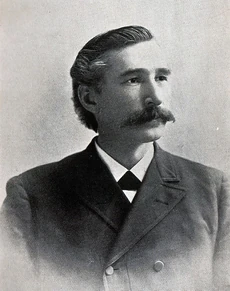
U.M.P. founder Anthony Flores of Durango.
The United Mexican Party was a major political party in the United States of Mexico in the 20th century. It was abolished by Vincent Mercator in 1950 following the Mercator Coup.
Formation[]
The United Mexican Party was established by Anthony Flores during his first term as President of the U.S.M. from 1902 to 1908. Although Flores had been a member of the Continentalist Party before being exiled by Benito Hermión in the late 19th century, he chose not to revive the party after his election in 1902. Most likely this was due to the association of the Continentalists with Hermión. It is unknown whether the decision to form a new party was made by Flores, by Kramer Associates President Diego Cortez y Catalán, or by both.
The U.M.P. was based on an alliance between businessmen in California and Jefferson (that is, Kramer Associates and its subordinate businesses) and the U.S.M.'s peasants, mostly Mexicanos from Chiapas and Durango. The major differences between the U.M.P. and their Continentalist predecessors were that the newer party was mildly isolationist, and favored state intervention on behalf of the poor. Although Sobel does not explicitly say so, the latter was probably a continuation of Hermión's Free Society programs. The restoration of civil liberties under Flores and growing prosperity in the U.S.M. led Flores to campaign for re-election in 1908 under the slogan "security in your home and prosperity in the land," and he went on to win a smashing victory over Frank Everhart, the candidate of the revived Liberty Party.
The Hundred Day War and the Slavery Issue[]
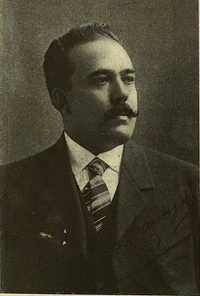
Victoriano Consalus.
Flores chose not to run for a third term in 1914, and the U.M.P. selected his Secretary of State, Victoriano Consalus, as its presidential candidate. Consalus was well-known, flamboyant, and shrewd, and was able to run on the accomplishments of the Flores administration. The Libertarians had little hope for victory, and their convention nominated Senator Albert Ullman of California, a young, able former college history professor. The Libertarians claimed that K.A. was financing the U.M.P., though Sobel insists that K.A. money found its way into the campaign chests of "friendly" politicians of both parties that year.
The main issue of the 1914 Mexican elections was the growing threat from Henri Fanchon, the expansionist President of France, who had been making a series of belligerent moves in South America and the Caribbean. A week before the election, on 8 February 1914, Flores held a meeting with Consalus and Ullman to discuss possible responses to the French challenge. Both agreed that Fanchon was capable of launching an attack on Mexico, but neither thought it would be successful. Word of the meeting was leaked to the press, presumably by Consalus, since Ullman was made to appear weak in the stories that resulted. Consalus received 11,702,470 votes, 61% of the total.
Consalus was able to defeat the French during the Hundred Day War of 28 June to 10 October 1914, but his victory was soon overshadowed by the Chapultepec treason trials. Thousands of Negro slaves had fled their masters and joined the French army during its march on Mexico City in July and August 1914. After the surrender of the French army on 29 August, Consalus ordered the escaped slaves arrested and put on trial for treason. This outraged public opinion throughout the world, especially in the Confederation of North America, where Southern Vandalian Governor Howard Washburne called for the release of the Negro prisoners and the abolition of slavery in Mexico, forming the Friends of Black Mexico to advance the cause.
On 4 January 1916, the day before the Mexico Tribunal was due to deliver its verdict in the trial, more than 2,000 young people, mostly F.B.M. members from the C.N.A., stormed the Federal Prison and freed the imprisoned slaves at a cost of 1166 killed and some 4000 injured. Although Consalus and North American Governor-General Albert Merriman were able to avoid war, the slavery issue came to dominate Mexican politics. Public opinion was sharply divided on the issue of ending slavery, and Consalus realized that he had no good choices. "If I retain the institution I will be pilloried. Should I ask for its end, I will be crushed."
Consalus ran for re-election in 1920, and although he ran a good campaign, he could not defeat the Libertarian candidate, General Emiliano Calles. Although Calles was a poor campaigner and speaker, the Mexican people trusted him to deal with the slavery issue, while Consalus clearly could not. Consalus lost the 1920 Mexican elections, receiving 10,214,835 votes, 46% of the total.
Pedro Fuentes and Kramer Associates[]
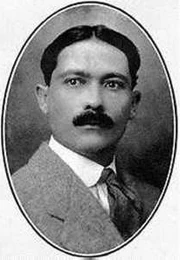
Pedro Fuentes of Chiapas.
When Calles introduced his Manumission Act on 13 May 1920, Assemblyman Pedro Fuentes of Chiapas led the fight against it, thereby making himself the new leader of the U.M.P. In 1924 he began preparing for a presidential run, and in 1926 he received the U.M.P.'s nomination. In his acceptance speech, Fuentes promised to "explore every avenue, every facet of the Calles record, and expose this man for the fraud he is." However, in a speech in Tampico on 5 January 1926, Fuentes stated that he believed the slavery issue closed. From that point on, the campaign was dull, with neither candidate making a major speech. Sobel cites Winston Clark's The Calles-Fuentes Campaign of 1926 to support the idea that once Fuentes had accepted manumission, Calles lost interest in the election. Fuentes won the 1926 Mexican elections with 13,760,940 votes, 53% of the total.
Although his opposition to manumission had gained him the Presidential Palace, Fuentes made no effort to reverse Calles' reform. The Manumission Bureau continued its work, and Fuentes even increased its funding in 1928. Instead, Fuentes turned to the matter of Kramer Associates' outsized role in Mexican politics and economics. Even though three quarters of the Congress had run against manumission, K.A.'s financial control of its members had resulted in passage of the Manumission Act. K.A.'s support of manumission increased the company's unpopularity in the U.S.M.: the Libertarians had always opposed it, and now U.M.P. politicians like Fuentes who had previously supported it (and been supported by it) turned against it.
Fuentes sincerely felt that K.A. had become too powerful and influential in Mexican life. He also believed that it might use its enormous influence in areas where its interests clashed with those of the nation. Fuentes was particularly concerned with K.A.'s activities in the Pacific, where new K.A. President John Jackson was trying to gain entry into the Japanese market, while Fuentes regarded the Japanese as a potential rival. Finally, Fuentes believed that K.A. meant to use its economic power to keep the U.S.M.'s Mexicanos subservient to the country's Anglo-Hispano elite.
Fuentes created a government commission on 17 June 1929 headed by Secretary of the Exchequer Stanley Zwicker to "investigate large corporations in the United States of Mexico, and make suggestions for legislation." Although K.A. was not mentioned, it was widely known that the company was the target of the Zwicker Commission. Jackson responded by reorganizing K.A. into a series of multinational subsidiaries incorporated in various foreign countries. The reorganization took four years to complete, and left the Zwicker Commission baffled, while Fuentes himself was made to appear inept.
By the time of the 1932 Mexican elections, the Libertarian candidate, Senator Alvin Silva of Durango, was a leading critic of the attack on K.A. "While the President worries about Kramer Associates, the world is changing rapidly. A visit to Honolulu would do him a world of good, not only to refresh his sagging spirit, but to give him a better perspective on the world as it is, not as it was." Fuentes was renominated by the U.M.P. but on election day only received 12,123,578 votes, 45% of the total. Fuentes was the last U.M.P. candidate to take office as president.
The Global War and the Mercator Coup[]
Under Silva, the Libertarians revived the Continentalist Party's aggressive foreign policy. In 1934, Silva signed a military alliance with the Germanic Confederation and began enlarging the U.S.M.'s military forces. Meanwhile, John Jackson moved K.A.'s corporate headquarters from San Francisco to the Philippines in February 1936, removing the company as a Mexican political issue. However, much of its business remained in Mexico, and this served to insulate the U.S.M. from the economic crisis that struck the rest of the world in the spring of 1936.
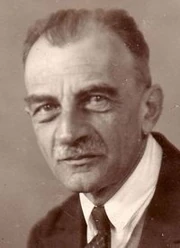
Richard Brace of Jefferson.
In the 1938 Mexican elections, Silva ran on the U.S.M.'s continued prosperity during the worldwide economic slump. "All around us there is poverty, yet we are rich; all around there is weakness, yet we are strong." Within the U.M.P. both former President Fuentes and Governor Richard Brace of Jefferson sought the party's nomination, both opposed to Silva's foreign policy. Brace won the nomination, but despite substantial donations from K.A., Brace was defeated by Silva, receiving only 13,233,365 votes, 46% of the total.
Although the Global War broke out in the Middle East and Europe in the summer and fall of 1939, the U.S.M. remained at peace. It was not until the beginning of 1942 that Mexico entered the war with a surprise attack on the Japanese. Initially, Mexican forces swept across the Pacific and down into China in alliance with the Siberians, but by the summer of 1944, the Japanese, Chinese, and Australians, subsidized by K.A., began driving the Mexicans back. In December 1944 a Japanese airmobile carrier task force bombed Honolulu, and three months later San Francisco suffered an aerial bombardment. In the summer of 1945, Silva was obliged to reinforce Hawaii against a possible Japanese invasion. The islands remained under siege for several months and suffered from regular air raids, but Silva's defense efforts were successful, and by the end of 1945 the Japanese had been driven off.
As it became clear to Silva that K.A. was actively supporting Mexico's enemies, he began a campaign to combat the company's influence. He cancelled the 1944 Mexican elections, and on 22 March 1944 he announced that all K.A. properties in the U.S.M. would be seized and nationalized. Due to the complexity of the Jackson reorganization, however, it was impossible to tell which Mexican businesses K.A. controlled, and at least four fifths of them remained under Jackson's control. At the same time, an insurrection called the Rainbow War was launched by a militant Negro named Philip Harrison, and terror attacks by the Mexicano Causa de Justicia became commonplace. Silva had seized control of the Mexican press in 1944, and he carried out a skillful propaganda campaign claiming that the insurgents were being funded and directed by K.A.
The war continued to go badly for Mexico, with Japan invading Siberia in 1947 while the Australians drove the Mexican Navy from the South Pacific. Silva promised an invasion of China for 1948, but instead the Mexicans were driven out of Siberia, and Japanese attempts to seize Hawaii and the Aleutian Islands were driven off. With his popular support failing in spite of his propaganda campaign, Silva announced in July 1949 that national elections would be held in January 1950.
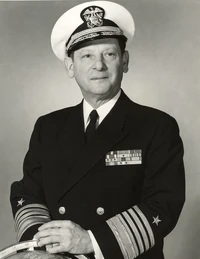
Admiral Paul Suarez.
The United Mexican Party had difficulty finding a candidate, since Silva's propaganda campaign had branded all the U.M.P. leaders as traitors. The United Mexicans finally chose Admiral Paul Suarez, who had resigned as Commander of the Pacific Fleet in protest against Silva's leadership. Although Suarez proposed to continue the war by blockading Japan and attacking Australia and the Kramer Associates' home bases of the Philippines and Taiwan, he became the de facto peace candidate, supported by those who wished to end the war, as well as internal opponents of the Silva regime.
The campaign was marked by violence committed by both sides, and on election day substantial voting irregularities took place in California and Jefferson. Suarez received 16,077,797 votes, 50.9% of the total, but the violence continued to escalate as Suarez' inauguration approached. On 16 January 1950, Colonel Vincent Mercator, the garrison commander of Guadalajara, unilaterally declared martial law in his district, and other garrison commanders followed suit. On 18 January, the day before Suarez' inauguration, Mercator and the other garrison commanders met in Mexico City, and announced that they were forming a provisional government. Within an hour, Suarez was taken into protective custody, and Silva was arrested for "crimes against the republic." With the Mercator Coup, democratic government ended in the U.S.M., and both parties were declared to be enemies of the people and abolished.
Sobel's sources for the history of the United Mexican Party include Zwicker's The Heart and Soul of Pedro Fuentes: A Portrait from Life (Mexico City, 1935); Winston Clark's The Calles-Fuentes Campaign of 1926 (Mexico City, 1945); Dwight Hermon's Starkism in Mexico: The Public Career of Pedro Fuentes (New York, 1955); Charles Adkins' A History of the United Mexican Party (Mexico City, 1959); and Jerome Krinz' Victoriano Consalus and the Politics of Race (New York, 1960).
This was the Featured Article for the week of 19 May 2013.
